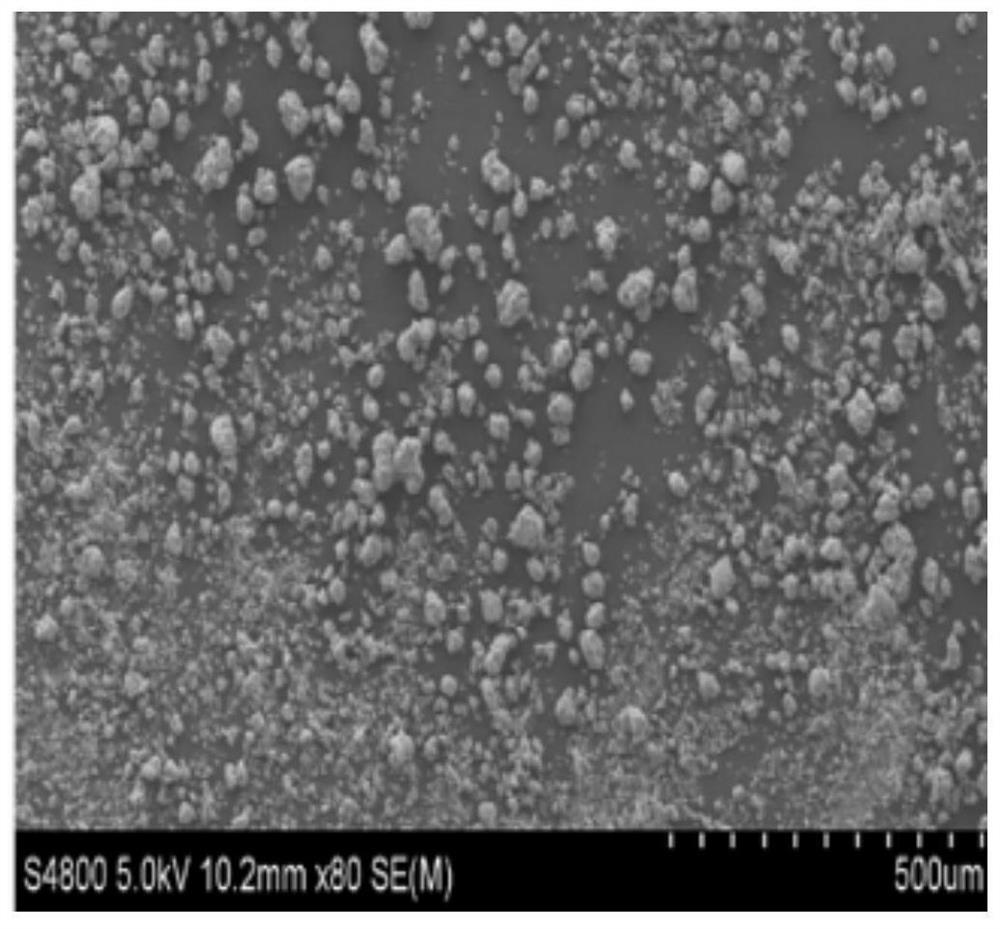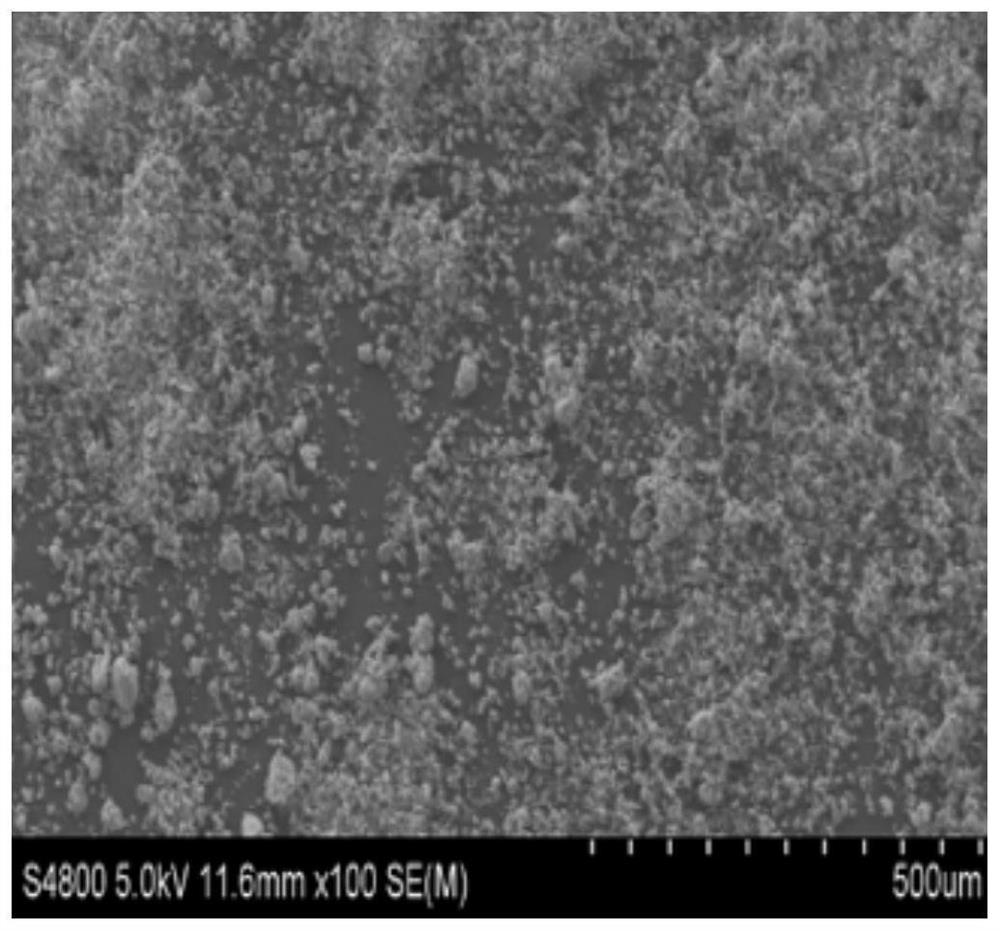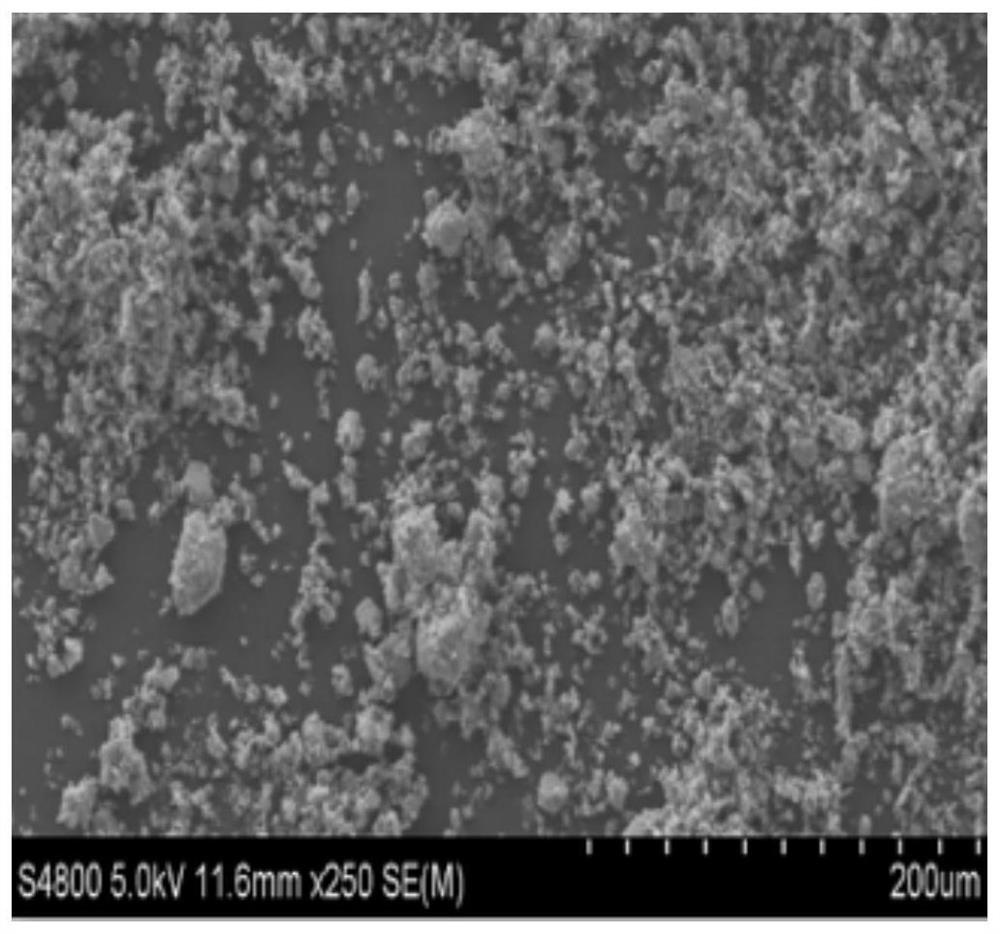A kind of polymer composite material additive and its application
A technology of composite materials and additives, which is applied in the field of high-value utilization of biomass, can solve the problems of poor dispersion of inorganic nanoparticles, increase of materials, and difficulty in achieving nanoscale compounding, so as to improve high-temperature rheological properties and benefit costs. Reduce the effect of environmental protection
- Summary
- Abstract
- Description
- Claims
- Application Information
AI Technical Summary
Problems solved by technology
Method used
Image
Examples
Embodiment 1
[0064] Embodiment 1 (epoxidation+alkylation)
[0065] Solid acid catalyst with 1g of inorganic material 50nm SiO 2 with 1ml 0.75mol / L H 2 SO 4 The proportion of the solution was impregnated for 10 hours, dried at 100°C for 8 hours, and the obtained samples were activated by roasting at 400°C for 3 hours to obtain the corresponding SO 4 2- / SiO 2 solid acid catalyst;
[0066] Take 10g of rice husk powder and add it into a high-temperature and high-pressure reactor at 600°C and 0.1MPa pressure (gauge pressure) to prepare 4.3g of bio-oil. After the reaction, add 0.1g of SO to the liquefied bio-oil 4 2- / SiO 2 Solid acid catalyst, stirring, heating temperature to 40°C, and then slowly adding 20% hydrogen peroxide dropwise, wherein hydrogen peroxide accounts for 20wt% of the mass ratio of bio-oil, and after the addition, constant temperature reaction for 2h to obtain modified bio-oil a, Add fatty alcohol: octanol as the raw material for alkylation, which accounts for 10wt...
Embodiment 2
[0067] Embodiment 2 (epoxidation+esterification):
[0068] Solid acid catalyst with 1g of inorganic material 50nm SiO 2 with 1ml 0.75mol / L H 2 SO 4 The proportion of the solution was impregnated for 10 h, dried at 100 °C for 8 h, and then the obtained samples were activated by roasting at 400 °C for 3 h to obtain the corresponding SO 4 2- / SiO 2 solid acid catalyst;
[0069]Take 10g of rice husk powder and add it into a high-temperature and high-pressure reactor at 400°C and 0.2MPa (gauge pressure) to prepare 3.8g of bio-oil. After the reaction, add 0.1g of SO to the liquefied bio-oil 4 2- / SiO 2 Solid acid catalyst, stirring, heating temperature to 40°C, and then slowly adding 20% hydrogen peroxide dropwise, wherein hydrogen peroxide accounts for 20wt% of the mass ratio of bio-oil, after the addition, constant temperature reaction for 2h to obtain modified bio-oil a, Add polyol: pentaerythritol as the raw material of esterification, which accounts for 10wt% of the b...
Embodiment 3
[0070] Embodiment 3 (epoxidation+alkylation+esterification):
[0071] Solid acid catalyst with 1g of inorganic material 50nm SiO 2 with 1ml 0.75mol / L H 2 SO 4 The proportion of the solution was impregnated for 10 h, dried at 100 °C for 8 h, and the obtained samples were roasted at 400 °C for 3 h to obtain the corresponding SO 4 2- / SiO 2 solid acid catalyst;
[0072] Take 10g of rice husk powder and add it into a high-temperature and high-pressure reactor at 600°C and 0.1MPa (gauge pressure) to prepare 4.3g of bio-oil. After the reaction, add 0.1g of SO to the liquefied bio-oil 4 2- / SiO 2 Solid acid catalyst, stirring, heating temperature to 40°C, and then slowly adding 20% hydrogen peroxide dropwise, wherein hydrogen peroxide accounts for 20wt% of the mass ratio of bio-oil, after the addition, constant temperature reaction for 2h to obtain modified bio-oil a, Add fatty alcohol: octanol as raw material for alkylation, which accounts for 5wt% of bio-oil, set the reac...
PUM
 Login to View More
Login to View More Abstract
Description
Claims
Application Information
 Login to View More
Login to View More - R&D Engineer
- R&D Manager
- IP Professional
- Industry Leading Data Capabilities
- Powerful AI technology
- Patent DNA Extraction
Browse by: Latest US Patents, China's latest patents, Technical Efficacy Thesaurus, Application Domain, Technology Topic, Popular Technical Reports.
© 2024 PatSnap. All rights reserved.Legal|Privacy policy|Modern Slavery Act Transparency Statement|Sitemap|About US| Contact US: help@patsnap.com










